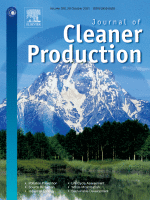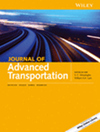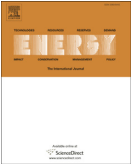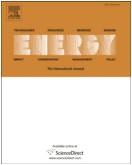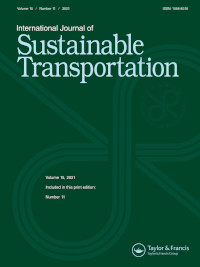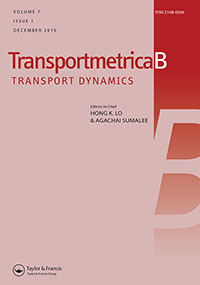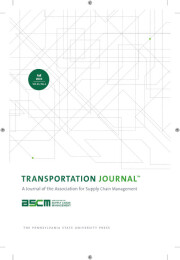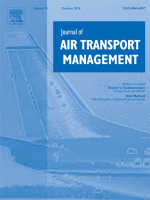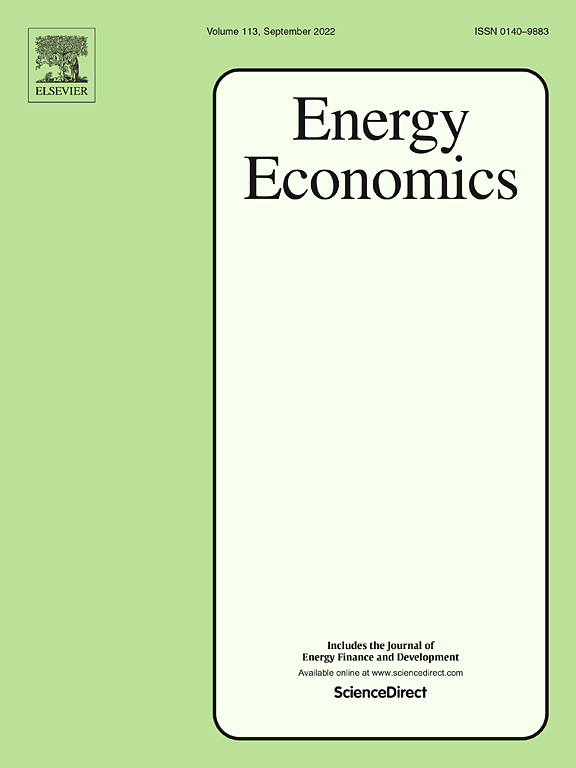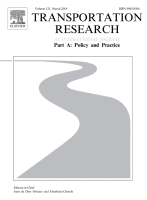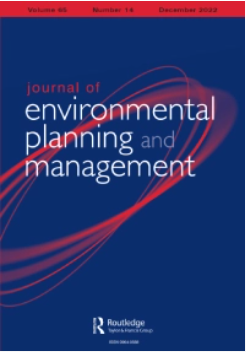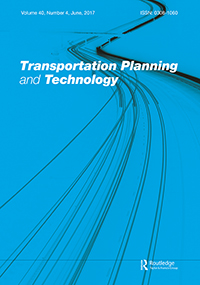航空公司效率评价
-
Can the aviation industry achieve carbon emission reduction and revenue growth simultaneously under the CNG2020 strategy? An empirical study with 25 benchmarking airlines
Abstract: The CNG2020 strategy proposed in 2016 has directly impacted the global aviation industry, and the ensuing COVID-19 pandemic has brought the global aviation industry to a standstill. This paper calculates the Pollution Abatement Costs (PAC) index and regulated profits of the global aviation industry by establishing Data Envelopment Analysis (DEA) model. Then, considering the airlines’ different recovery times from COVID-19, we predict the data of 25 international benchmark airlines from 2021 to 2027 based on the actual data during 2012–2019. The regulated profits can help judge whether airlines can achieve a win-win situation of carbon emission reduction and revenue growth in the future recovery process. We have some findings: 1. Air France-KLM has the maximum regulated profits, while EasyJet has the minimal regulated gains. 2. The setting of route conditions impacts whether airlines can achieve a win-win situation.
-
Airline efficiency measures considering undesirable outputs: an application of a network slack-based measures with double frontiers
In the context of stricter environmental regulations and more intense market competition, how to improve the efficiency of airlines has become a hot topic. In this paper, we construct a Network Slack-Based Measures (NSBM) model with double frontiers to evaluate airlines from an optimistic perspective, a pessimistic view, and the integration of optimistic and pessimistic viewpoints. The empirical study is based on data for 24 global airlines in 2018 and considers two situations when there is only crisp data and when there exists interval data. A three-stage network model (including operation stage, service stage, and sales stage) is constructed to explore the driving factors of airline efficiency. The results show that optimistic efficiency targets efficient stages, while pessimistic efficiency is more capable of finding the inefficient stages.
-
Airline environmental efficiency comparison through two non-separable inputs disposability Range Adjusted Measure models
The aviation industry contributes to climate pollution while facilitating commercial trade and international exchanges. How to improve the overall efficiency of airlines has become a hot issue of social concern. Based on the Range Adjusted Measure model (RAM), this paper proposes two improved by-production models, namely mixed input sharing model and good output sharing model, which decompose the air transport process to explore the driving factors of airline efficiency. We take the Number of Employees (NE), Fleet Size (FS) and Aviation Kerosene (AK) as the inputs, the Revenue Passenger Kilometers (RPK) as the desirable output, and the Greenhouse gas emission (GHG) as the undesirable output. The empirical study is based on the data of 22 global airlines from 2014 to 2019. We have some findings: (1) The average efficiency scores of mixed input sharing model are higher for most airlines than the good output sharing model. (2) The efficiency scores of the good output sharing model are more distributed than the mixed input sharing model. (3) Fleet renewal and carbon emission reduction policies play an important role in improving environmental efficiency. In addition, the possible future research directions and policy implications are also proposed in this paper.
-
A Review of Data Envelopment Analysis in Airline Efficiency: State of the Art and Prospects
The rapid development of the aviation industry has brought about the deterioration of the climate, which makes airline e?ciency become a hot issue of social concern. As an important nonparametric method, Data Envelopment Analysis (DEA), has been widely applied in e?ciency evaluation. This paper examines 130 papers published in the period of 1993–2020 to summarize the literature involving the special application of DEA models in airline e?ciency. The paper begins with an overall review of the existing literature, and then the radial DEA, nonradial DEA, network DEA, dynamic DEA, and DEA models with undesirable outputs applied in airline e?ciency are introduced. The main advantages and disadvantages of the above models are summarized, and the drivers of airline e?ciency are analyzed. Finally, the literature review ends up with future research directions and conclusions.
-
An application of Dynamic Range Adjusted Measure with weak-G disposability in evaluating airline energy efficiency
The dynamic energy efficiencies of airlines are measured in this paper. Greenhouse gas emissions are selected as the undesirable output, and the dynamic factor is defined as fleet size. Weak-G disposability is considered to reflect the material balance principle. A new model, the Dynamic Range Adjusted Measure (RAM) with weak-G disposability, is built to evaluate the dynamic energy efficiency of 29 international airlines during the year of 2011–2017. We find that Air Berlin, Scandinavian Airlines and Norwegian are efficient airlines and most airlines have an efficiency change of less than or equal to 1. Then we performed a sensitivity analysis for the annual weights and found that the results of equal weight are more reasonable.
-
Airline energy efficiency measures based on an epsilon-based Range-Adjusted Measure model
This study proposes an Epsilon-Based Range-Adjusted Measure which enhances accuracy of the conventional RAM model that is widely used in the literature of airline energy efficiency. The model is then utilized to investigate the efficiency of major airlines from different regions of the world. Results reveal that Scandinavian Airlines was the most efficient airline and could be served as the benchmark for all these airlines. On the other hand, divisional efficiencies reveal that this airline can still improve its service efficiency so that overall efficiency is enhanced even further.
-
Airline environmental efficiency measures considering negative data: An application of a modified network Modified Slacks-based measure model
In this paper, we propose a new network Modified Slacks-based Measure (MSBM) model to measure environmental efficiencies of airlines when the inputs or outputs of airlines are negative. The samples are 25 global airlines from 2008 to 2018 who have negative input or output. In contrast to traditional models, this model can deal with negative data and combine the network DEA with MSBM model. Based on this, we get several important results: (1) Norwegian performs the best among these 25 airlines during 2008–2018, while Air France-KLM has the lowest overall efficiency. (2) For most airlines, their environmental efficiencies are lower than production efficiencies. (3) In order to improve the overall efficiency, airlines should take the first step to improve the efficiency of the operations stage. (4) Delta is the company with the largest increase in efficiency from 2008 to 2018. (5) The airlines in Europe perform better than the airlines of Asia, America and Oceania in all efficiencies.
-
Airline energy efficiency measures using a network range-adjusted measure with unified natural and managerial disposability
In recent years, the issue of aviation carbon emissions has caused wide public concern. How to measure airline performance under the premise of considering aviation carbon emissions has become a hot issue. In this paper, airline energy efficiency is divided into three stages as follows: operations, services, and sales. A network range-adjusted measure with unified natural and managerial disposability model is proposed to calculate the environmental efficiencies of 29 airlines from 2008 to 2015. We get some interesting results. (1) Scandinavian has the highest overall efficiency among these 29 airlines during 2008–2015. (2) For the other 28 airlines, the improvement of the undesirable outputs is not the most urgent work to improve overall efficiency. (3) The overall efficiency has no obvious fluctuation in this period.
-
Analyzing the role of competition and cooperation in airline environmental efficiency through two dynamic environmental cross-efficiency models
We build a dynamic structure for airline environmental efficiency and propose the Dynamic Benevolent Environmental DEA Cross-efficiency model and Dynamic Aggressive Environmental DEA Cross-efficiency model to explore whether cooperation or competition can reflect the airline dynamic environmental efficiency in the past few years. Then, the models are applied to evaluate the efficiencies of 29 international airlines from 2010 to 2016. The results demonstrate that cooperation is more likely to unfold the benchmarking airlines than the competition, but competition is more likely to embody the airline with the lowest environmental efficiency.
-
The online pricing strategy of low-cost carriers when carbon tax and competition are considered
We study the optimal price and optimal profit for low-cost carriers when they adopt two ticket booking channels: official website and online travel agencies (OTA). Compared with existing research, we consider the impacts of carbon tax and the competitions among the airlines. Then we apply the actual example of Ryanair and Qunar.com to analyze the results under different circumstances. The main findings are: 1. Without regard to other costs, Ryanair should select B757 as the single aircraft type to replace A320. 2. For the low-cost carriers, the main channel to sell tickets should be official website. 3. Passenger loyalty has an important impact on the optimal price and the total profit of the airlines.
-
Official website or online travel agencies? The online ticket booking strategies of low-cost carriers
This paper studies the optimal price and optimal profit for different online ticket booking strategies adopted by low-cost carriers (LCCs): official website or online travel agencies (OTAs). We consider the competitions among the airlines and the impact of passenger satisfaction on their choices. Moreover, we apply an empirical example (i.e. Spring Airlines and Qunar.com) to analyse the different strategies. The results show that when an OTA has advantage in ticket price, the optimal price has no relationship with the number of the airlines.
-
Comparison Analysis of Airline Energy Efficiency Under Weak Disposability and Strong Disposability Using a Virtual Frontier Slack–Based Measure Model
In this article, the energy efficiency of airlines has been studied with number of employees, capital stock, and tons of aviation kerosene as the inputs and revenue tonne kilometers, revenue passenger kilometers, total business income, and CO2 emission as the outputs. Two new models, Virtual Frontier SBM (slack-based measure) with strong disposability and Virtual Frontier SBM with weak disposability, are proposed to calculate the energy efficiencies of 22 airlines from 2008 to 2012. We prove two important properties of Virtual Frontier SBM, which can show its advantages over traditional model. The main findings are (1) Scandinavian Airlines has the largest average energy efficiency in the period both in strong disposability and weak disposability; and (2) CO2 emission has significant impacts on energy efficiency change in strong disposability, while it has little impact in weak disposability.
-
Airline efficiency with optimal employee allocation: An Input-shared Network Range Adjusted Measure
Airline's departments can be divided into three stages based on their roles: Operations, Services and Sales. Some inputs are shared among these stages such as employees. However, different airlines have different employee allocation proportion among the three stages, and it is important for the airlines to realize the optimal allocation proportions in the pursuit of high airline efficiency. Focusing on this problem, we propose an Input-shared Network Range Adjusted Measure model to calculate the efficiencies of 29 airlines from 2008 to 2015. The main findings are: 1. With the shared input, airline efficiency has a large improvement against that without shared input. 2. Eva Air has the highest overall efficiency among these 29 airlines. 3. Most airlines' average efficiencies in Operations and Services are larger than Sales. 4. Different airlines' employee optimal allocation proportions have a large difference and most airlines' largest allocation proportions should be in Sales. 5. It is reasonable to set average stage weights for the three stage.
-
Airline dynamic efficiency measures with a Dynamic RAM with unified natural & managerial disposability
In this paper, we propose a Dynamic Range Adjusted Measure with unified natural & managerial disposability to evaluate the dynamic efficiency of 29 airlines during 2009–2015. In a dynamic period, the new model can judge automatically whether the airline should be under natural disposability or managerial disposability in the premise of optimizing the overall efficiency. We get some findings: 1. Scandinavian has the highest overall efficiency among these 29 airlines while Norwegian's overall efficiency is the least. 2. Improving undesirable outputs is not the most urgent work of these airlines. 3. In order to optimize the overall efficiency, most airlines should be under managerial disposability. 4. Most airlines' efficiencies have no obvious fluctuation in this period.
-
Pollution abatement costs change decomposition for airlines: An analysis from a dynamic perspective
In this paper, we define the pollution abatement cost (PAC) as the ratio of the outputs when the undesirable outputs are freely disposed to the outputs when the undesirable outputs are weakly disposed. Then we propose a Dynamic Environmental DEA model to calculate the pollution abatement cost change indexes, which are decomposed into technical change index, input level change index and undesirable output production change index. An empirical study is done based on the actual data of 18 large global airlines from 2008 to 2014. The main findings are: (1) Delta Air Lines has the largest PAC changes. (2) Most airlines' PACs have decreased. (3) The financial crisis of 2008 and the application of biofuel aircrafts have important impacts on the PAC change.
-
Airline environmental efficiency measures considering materials balance principles: an application of a network range-adjusted measure with weak-G disposability
In this paper, we focus on assessing airline environmental efficiency with network structure and build a three-stage efficiency production process. Then, we propose a new model, network range-adjusted measure with weak-G disposability, to measure the environmental efficiency of 29 global airlines based on the data from 2008 to 2015. Finally, a second-stage regression analysis is done to explore the important influencing factors. The main findings are as follows: (1) Eva Air is the airline with the highest efficiency among these 29 airlines; (2) Delta is at the bottom of the efficiency ranking among the 29 airlines and this result is in correlation with its old aircraft fleet; (3) the average efficiency change index in 2014 is the highest in the period 2009–2015; (4) only average fleet age has a slightly significant impact on the overall efficiency and Services efficiency.
-
Airline energy efficiency measures using the Virtual Frontier Network RAM with weak disposability
In this paper, airline energy efficiency is divided into three stages: the operations stage, the services stage and the sales stage. Greenhouse gas emissions are treated as an undesirable output of the services stage. This new three-stage strategic operating framework is a modification of existing models. A new model, Virtual Frontier Network Range Adjusted Measure with weak disposability, is proposed to evaluate the efficiencies of 22 international airlines, from 2008 to 2012. The results show that the new model can establish more reasonable rankings and confirm new benchmarking airlines and that inclusion in the European Union’s Emissions Trading Scheme has had little influence on the improvement of airline energy efficiency.
-
Evaluating airline energy efficiency: An integrated approach with Network Epsilon-based Measure and Network Slacks-based Measure
This paper focuses on evaluating airline energy efficiency, which is firstly divided into four stages: Operations Stage, Fleet Maintenance Stage, Services Stage and Sales Stage. The new four-stage network structure of airline energy efficiency is a modification of existing models. A new approach, integrated with Network Epsilon-based Measure and Network Slacks-based Measure, is applied to assess the overall energy efficiency and divisional efficiency of 19 international airlines from 2008 to 2014. The influencing factors of airline energy efficiency are analyzed through the regression analysis. The results indicate the followings: 1. The integrated model can identify the benchmarking airlines in the overall system and stages. 2. Most airlines' energy efficiencies keep steady during the period, except for some sharply fluctuations. The efficiency decreases mainly centralized in the year 2008–2011, affected by the financial crisis in the USA. 3. The average age of fleet is positively correlated with the overall energy efficiency, and each divisional efficiency has different significant influencing factors.



